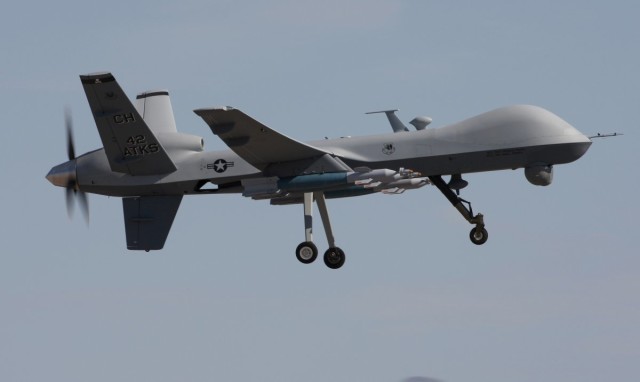A starter generator failure and depletion of backup batteries led to the crash of an MQ-9 Reaper remotely piloted aircraft Dec. 12, 2014, in the Central Command Area of Responsibility, according to an Abbreviated Accident Investigation Board Report released on July 30.
When the accident occurred, the MQ-9 crew was flying a mission in support of operations in the CENTCOM AOR. During the flight, the pilot briefly lost the satellite link with the aircraft. Once communication was reestablished the pilot noticed battery warning and starter-generator failure indications and performed emergency checklists, including programming a flight route to the Launch and Recovery Element in the AOR. Upon assuming command of the aircraft, the LRE discovered the aircraft’s battery voltage was insufficient to lower the landing gear for a safe recovery. The LRE directed the aircraft to intentionally crash in nearby mountains.
The Accident Investigation Board President found by clear and convincing evidence the cause of the mishap was the failure of the starter generator. Additionally, backup battery power was depleted to the point where a safe recovery could not be executed. The investigation also found two factors that substantially contributed to the mishap. First, a delay in uploading necessary software at the LRE added loiter time to the aircraft’s mission and contributed to the depletion of its battery reserves. Second, the failure to lower the landing gear before sending the remote to the LRE contributed to the LRE’s decision to intentionally crash the aircraft to avoid an unsafe landing.
At the time of the mishap, the aircraft was deployed from the 432nd Wing at Creech Air Force Base, Nev., and was operated by the 432nd Attack Squadron at Ellsworth AFB, S.D.
The aircraft was lost with a total cost to the government of $14.1 million. As a result of the intentional crash, there were no injuries and no additional damage to government or private property.
Source: US Air Force

